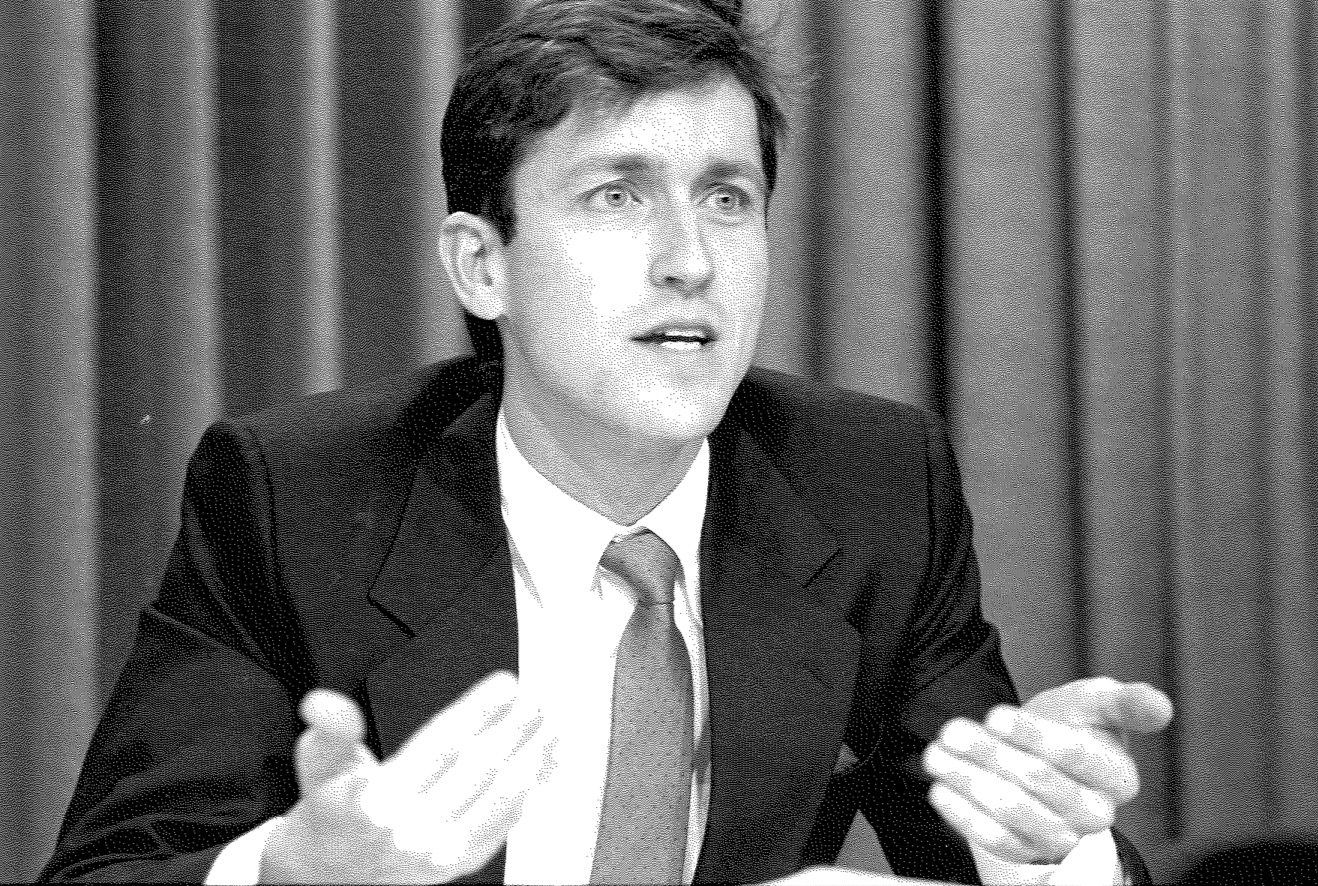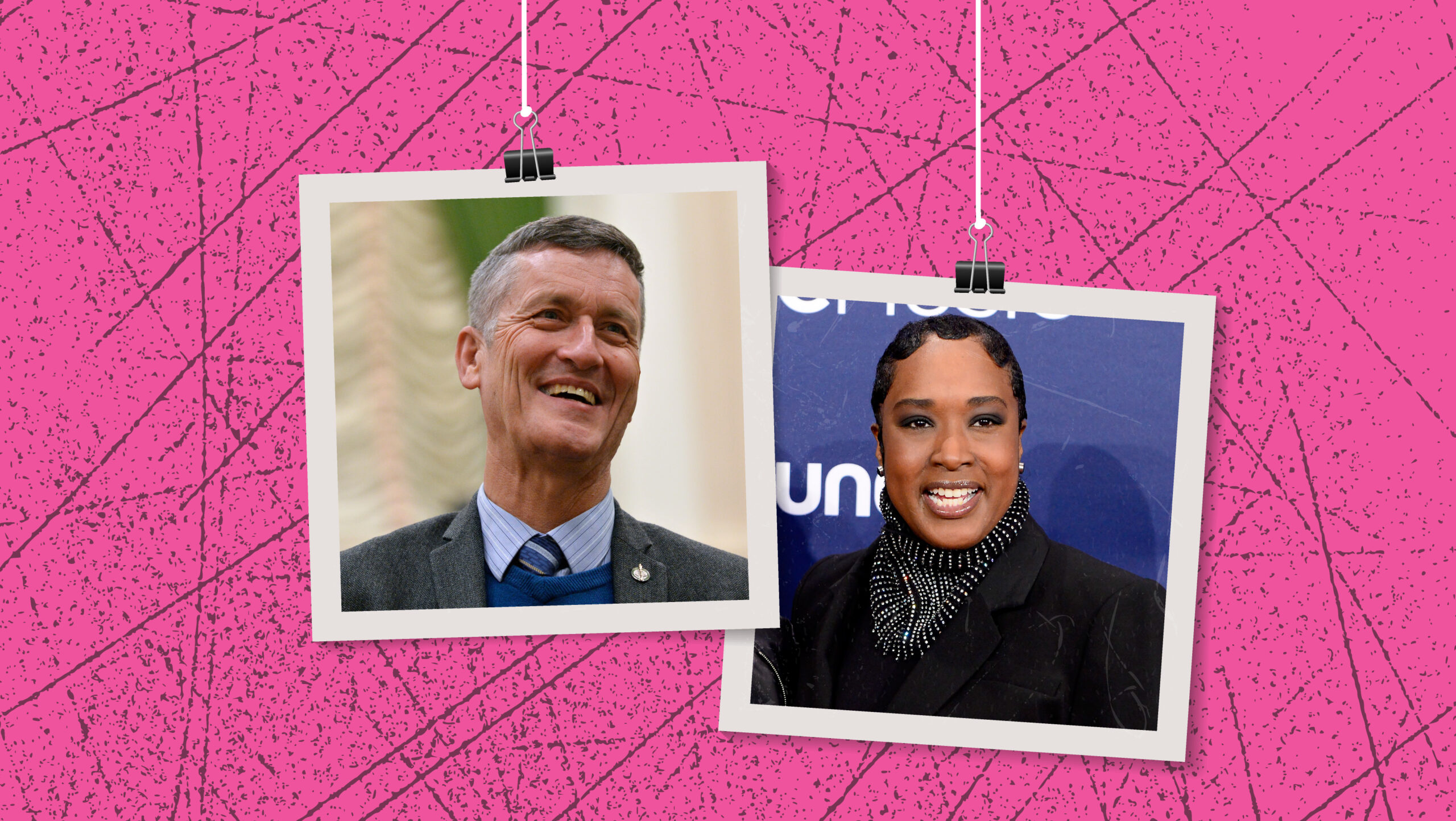This story is part of “Still Fighting”, a series exploring the past 50 years of LGBTQ2 activism in Canada.
In 1988, Svend Robinson made history when he became the first Canadian MP to come out as gay. The AIDS crisis was ravaging queer communities, police continued to raid bathhouses across the country and marriage equality was still almost two decades away. But Robinson didn’t want to hide his identity. “I’m proud to be part of a community of beautiful men and women,” he told the media, confirming his sexuality to the country. In his subsequent 16 years in office, the Vancouver NDP MP would rally tirelessly for LGBTQ2 rights, most notably tabling bills to legalize same-sex marriage.
Though Robinson helped pave a path for other queer and trans politicians, there’s still plenty of work to be done. In last year’s federal election, just 1.7 percent of elected candidates openly identified as LGBTQ2. That percentage has remained unchanged in Parliament since 2006 — around the same time Robinson stepped away from federal politics.
It’s what’s made Ontario NDP MPP Jill Andrew’s rise in politics this year so exciting. Andrew, a longtime activist for LGBTQ2 communities and communities of colour in Toronto, is a founding member of the first-ever Black caucus in Ontario and has prioritized queer and trans issues across the province.
Queer and trans politicians today face a vastly different set of challenges than they did in the ’80s. For Robinson, who is once again stepping into the political arena as a candidate for the NDP in Burnaby, BC, ending the ongoing criminalization of LGBTQ2 communities is a priority — from blood bans targeting gay men and trans folks to the problems with HIV non-disclosure laws. For Andrew, it’s rallying against the exclusionary conservative wave that has hit Ontario and supporting policies like LGBTQ2-inclusive sex-ed.
Xtra sat down with both Robinson and Andrew to discuss what LGBTQ2 politics looked like in the past, what has changed so far and what queer and trans politicians are still fighting for today.
Let’s start by looking back. Svend, can you describe the political and social climate in which you came out?
Svend Robinson: I came out during the HIV/AIDS epidemic, when hatred and homophobia meant that gay men were often more afraid to tell their families they were gay than that they were dying. The religious right claimed that AIDS was God’s punishment of homosexuality. Political leadership was shamefully lacking both in Canada and globally, when LGBTQ2 people outside of Quebec [where the provincial Charter of Human Rights prohibited discrimination on the basis of sexual orientation] had no basic human rights protections from losing our jobs and our homes and our children. We were thrown out of the military and the RCMP. Our relationships were denied any form of official recognition. Discriminatory and harsh Criminal Code provisions targeted our communities. Trans people were invisible. There were very few openly LGBTQ2 leaders in politics, the media or elsewhere in society. LGBTQ2 people around the world were criminalized and demonized.
I came out in order to confront and fight these challenges. In response, the window at my Burnaby constituency office was smashed. I was attacked by provincial premiers and the prime minister. I received hate mail and death threats. But I was re-elected with a huge majority, and I received many letters from young LGBTQ2 people across the country saying that my coming out had given them hope and strength. That made it all worthwhile for me.
Jill, you have just entered politics, but you’ve long been a political activist. What was the climate like for you coming out?
Jill Andrew: Regardless of my job title, my pride has meant my ability to be me — to embrace myself just the way I am and to be able to live in my communities and my workspaces as a whole person in spite of the challenges. I have found greater strength in my pride and I have also found greater vulnerability along my journey towards pride. It’s a type of vulnerability that I grappled with as I started my path toward being elected as the first Black queer woman to sit in the Legislative Assembly of Ontario.
On a personal note, the most courageous moment in my life — even more so than surviving several life-saving surgeries and navigating chronic health issues — was coming out as a queer woman to my mother. It was Christmas Day in 2006, and we had just done some groceries in preparation for our holiday dinner. As I was placing one of the bottles into the fridge it fell and it broke into a million pieces. Our bodies literally hold our anxieties and fears until they can’t. I couldn’t “hide” my queerness anymore and I strongly believe that the flustering of my body which caused that bottle to fall was the catalyst to finally answer my mom when she would ask, “Jilly, what’s wrong?” That day I told my mother my truth. When I was able to share the best part of myself with her, when I no longer had to hide in shame, in fear, in guilt, I began to live more fully and in my own light.
Svend, what was it like to be the first openly gay MP in Canada?

Svend Robinson in March 1988. Credit: Philip Hannan/Xtra
Robinson: It was incredibly liberating, both personally and politically, to be able to be out and proud. I had never denied or lied about my sexuality but I always had to choose my words with great care.
I didn’t exactly start a trend in the Canadian Parliament — I was not only the first openly gay MP, I was also the only one from 1988 until 1994, when Real Menard from Quebec joined me. It was not until 2001, seven years later, that my friend Libby Davies came out as the first openly lesbian MP.
Still, I know that I never had a moment’s regret. I felt so privileged to be able to work with dedicated activists across the country and around the world for justice, respect and dignity for our LGBTQ2 communities.
Jill, you’re an openly queer Black woman now working with the province’s first Black caucus. There are still major obstacles to overcome for you and your party, too.
Andrew: I am the first Black queer woman to sit in Queen’s Park, and while this is an exceptional piece of history I am proud of, it is quite shameful that it’s the state of things in 2019. NDP LGBTQ+ critic Terence Kernaghan and I are the only two openly queer MPPs in the Ontario Legislature — and this is out of 124 of us. We’ve got work to do!
With the NDP’s Black caucus, we’ve started that work. My office has hosted dozens of Black, racialized and underrepresented students at Queen’s Park so that they know they are always welcome there, so they can see themselves in us, learn why their voices are so vital to our democratic process and realize that they, too, can be here one day, sitting at the table and being part of the democratic decision-making process.
Let’s talk about progress and resistance. Jill, as an activist and now a politician, you must have experienced the push-and-pull firsthand.
THREAD: I was honoured to speak at the #LGBTQ Pride & Trans Flag Raising on behalf of @OntarioNDP. TU to @pridetoronto & @opspridenetwork for organizing. Ford govt must include our community in their budget. Currently they do not! Clips below. #Pride2019 #PrideMonth #onpoli (1/5) pic.twitter.com/ccwwTS7TMs
— Dr. Jill Andrew (@JILLSLASTWORD) June 18, 2019
Andrew: As I told the crowd at Toronto’s Pride flag raising earlier this week, we have to be determined not to be trapped inside racist, patriarchal, homophobic, transphobic, bi-phobic and colonial boxes. We have to continue to oppose, resist and protest against practices and policies that take us backward and not forward.
However, in the same vein, we are not superheroes. We are not bulletproof — we are not immune to heteronormativity, white supremacy, physical violence or blood bans and conversion therapy, which are still occurring.
We are not immune to severe emotional and mental trauma at the hands of people — including politicians — who seek to wash away our lived experiences by downplaying the severity of our struggles, stigmatizing our personal lives and how we love or refusing to say the words “transphobia” or “homophobia.” Our queer, trans and gender non-conforming communities must be supported in government budgets. Our queer, trans, Two-Spirit and gender non-conforming communities are still fighting for better equity.
Svend, you’re making a return to politics after some time away from it. And Jill, you’re just getting started in your role as MPP here in Ontario. Can you both speak to what you think are the biggest issues facing LGBTQ2 people in Canada right now?
Robinson: I think we’ve made huge progress, but there is still lots of work to be done — especially for trans people, who face major challenges in our healthcare system and in employment, and are far too often victims of assault and violence. There must be national leadership, working with provinces and territories, to ban conversion therapy. Liberals must keep their promise to end the blood ban. Employment equity laws must be expanded to include LGBTQ2 people. And Canada must do more to support LGBTQ2 refugees, and tackle global homophobia and transphobia.
Andrew: In Ontario specifically, we need healthcare and education to be funded properly — both are currently funded below inflation, which means Ontarians are not getting access to the public services they need. We need real affordable housing options because, statistically, we make less than our heterosexual counterparts (and this diminishes further for racialized, disabled, Deaf and trans communities).
Our communities are also disproportionately affected by everyday physical and systemic violence based on our sexuality, our gender identity or gender expression. This is an even scarier reality for those of us who are trans, Black, racialized, Indigenous and disabled.
We also know that trans youth are more susceptible to bullying, depression and attempts of suicide than non-trans students. Trans youth are especially at risk if they attend schools that do not have equity groups that encourage support, acceptance and diversity as a school and community strength.
The current conservative government in Ontario does not have us on their agenda, but we are the resistance and will continue fighting.
There is obviously greater representation of LGBTQ2 people in Canadian politics today than there was in decades past. But we know that Canada is falling behind other countries like the UK. How much further do we need to go to ensure our queer and trans communities are fully represented by elected officials?
Robinson: There has not been a single out trans person elected at the provincial/territorial or federal level in our history. That absolutely must change.
Andrew: We have a long way to go. We cannot begin recruiting queer, trans and gender non-conforming candidates the year of or before an election. It is important that we do so year-round, all the time — and not just folks we may think could make great candidates but entire communities.
Answers have been edited for clarity.
This story is part of “Still Fighting”, a series exploring the past 50 years of LGBTQ2 activism in Canada.



 Why you can trust Xtra
Why you can trust Xtra


